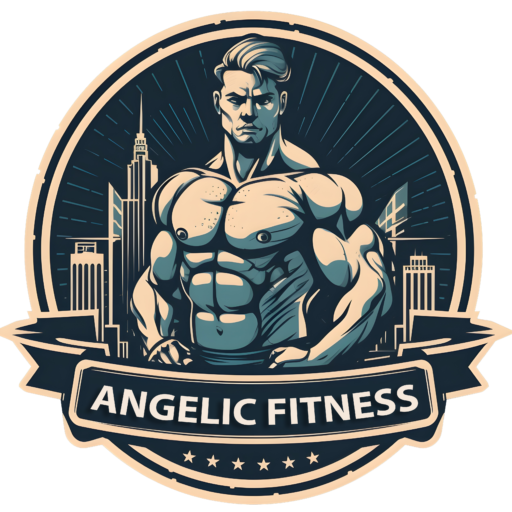Exercise is a fundamental aspect of a healthy lifestyle, offering a multitude of benefits for both physical and mental well-being. Among these benefits is the ability to enhance muscle function and promote positive changes in muscle structure. Understanding how muscles change with exercise provides valuable insights into the mechanisms underlying these adaptations and their implications for overall health and performance.
Basic knowledge of muscle how it works

Muscles, the contractile tissues of the body, play a important role in movement, posture, and various physiological processes. They are composed of bundles of muscle fibers, each containing many smaller units called myofibrils. These myofibrils are composed of actin and myosin filaments, the proteins responsible for muscle contraction.
Types of Muscle Fibers

Muscle fibers are broadly classified into two main types: slow-twitch (type I) and fast-twitch (type II). Slow-twitch fibers are characterized by their fatigue resistance and efficient oxygen utilization, making them well-suited for endurance activities. Fast-twitch fibers, on the other hand, are more powerful but fatigue more quickly, enabling them to generate high levels of force for short bursts, such as sprinting or lifting heavy weights.
Exercise that change muscle size

Regular exercise triggers a series of adaptations within muscles that enhance their function and structure. These adaptations can be broadly categorized into three main areas:
1. Muscle Hypertrophy
Muscle hypertrophy, also known as muscle growth, refers to an increase in the size of muscle fibers. This occurs due to an increase in the number and size of myofibrils within the muscle fibers. Exercise-induced hypertrophy is primarily driven by resistance training, where muscles are subjected to mechanical overload.
2. Muscle Strength
Muscle strength is the ability of a muscle to exert force against resistance. Exercise, particularly resistance training, enhances muscle strength by increasing the number of cross-bridges formed between actin and myosin filaments, leading to more efficient force production.
3. Muscle Endurance
Muscle endurance refers to the ability of a muscle to sustain repeated contractions without fatigue. Exercise, particularly endurance training, improves muscle endurance by increasing the number of mitochondria, the energy-producing organelles within muscle fibers, and by enhancing the oxygen delivery capacity of blood vessels supplying the muscles.
Basic tips that How muscles change with exercise

Several factors influence the degree to which muscles adapt to exercise, including:
1. Exercise Type and Intensity: The type of exercise and its intensity play a significant role in determining the specific adaptations that occur. Resistance training, for instance, primarily promotes hypertrophy and strength gains, while endurance training focuses on enhancing muscle endurance.
2. Exercise Frequency and Duration: The frequency and duration of exercise sessions also contribute to muscle adaptations. Regular exercise is crucial for maintaining and promoting muscle gains.
3. Nutrition: Adequate protein intake is essential for muscle growth and repair. Consuming sufficient carbohydrates and healthy fats also supports muscle function and adaptation.
4. Rest and Recovery: Adequate rest and recovery are essential for muscle growth and repair. Allowing muscles to recover after strenuous exercise allows for the rebuilding of muscle tissue and the consolidation of training-induced adaptations.
5. Individual Factors: Genetic predisposition, age, gender, and hormonal factors can also influence the extent of muscle adaptations.
Applications of Exercise-Induced Muscle Adaptations

Exercise-induced muscle adaptations have a wide range of applications, including:
1. Enhancing Athletic Performance: Athletes in various sports benefit from improved muscle strength, power, and endurance, leading to enhanced performance and competitive edge.
2. Improving Overall Health: Regular exercise and the associated muscle adaptations contribute to weight management, reduced risk of chronic diseases, and improved bone health.
3. Functional Fitness and Rehabilitation: Muscle adaptations play a crucial role in functional fitness, enabling individuals to perform daily activities with ease and reducing the risk of injuries. Exercise is also an integral component of rehabilitation programs following injuries or surgeries.
Conclusion
Exercise-induced muscle adaptations are complex processes that enhance muscle function and structure. Understanding these adaptations provides valuable insights into the benefits of exercise for overall health, performance, and well-being. Regular physical activity, tailored to individual needs and goals, is essential for reaping the rewards of exercise-induced muscle adaptations.
faq’s
Q: What is the difference between muscle hypertrophy and muscle strength?
A: Muscle hypertrophy, also known as muscle growth, refers to an increase in the size of muscle fibers, while muscle strength is the ability of a muscle to exert force against resistance. Exercise-induced hypertrophy is primarily driven by resistance training, where muscles are subjected to mechanical overload. Muscle strength gains occur due to an increase in the number of cross-bridges formed between actin and myosin filaments within muscle fibers, leading to more efficient force production.
Q: How can I increase muscle hypertrophy?
A: Resistance training is the primary method for increasing muscle hypertrophy. This involves lifting weights or performing bodyweight exercises that challenge the muscles to overcome resistance. To promote hypertrophy, it is important to focus on compound exercises that engage multiple muscle groups, such as squats, deadlifts, bench presses, and rows. Gradually increasing the weight or resistance over time is crucial for continuous muscle growth.
Q: How can I improve muscle strength?
A: Resistance training also plays a key role in improving muscle strength. Focus on exercises that involve lifting heavy weights with proper form. Aim for 3-5 sets of 8-12 repetitions for each exercise, with adequate rest between sets. Progressive overload, where you gradually increase the weight or resistance over time, is essential for continuous strength gains.
Q: How does nutrition influence exercise-induced muscle adaptations?
A: Adequate protein intake is essential for muscle growth and repair. Aim to consume around 0.8-1 grams of protein per kilogram of body weight daily. Consuming sufficient carbohydrates and healthy fats also supports muscle function and adaptation.






